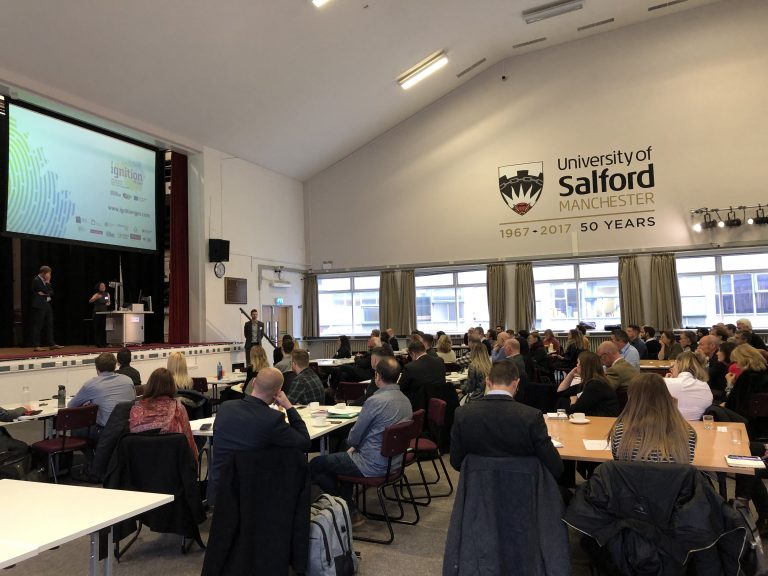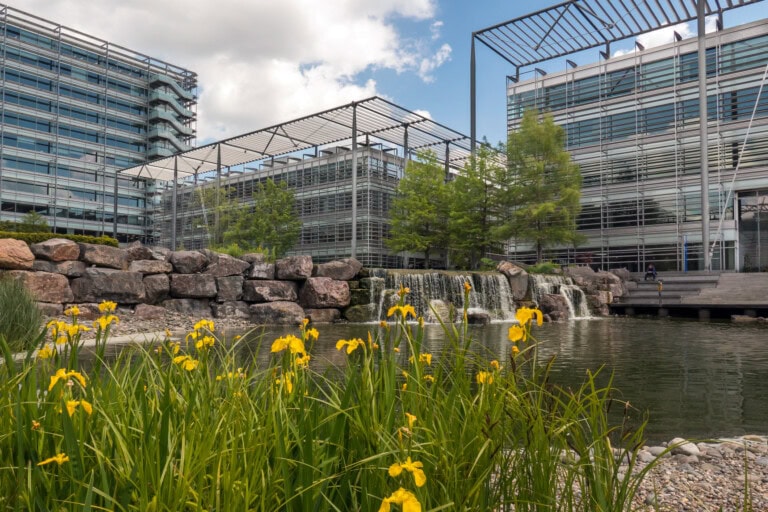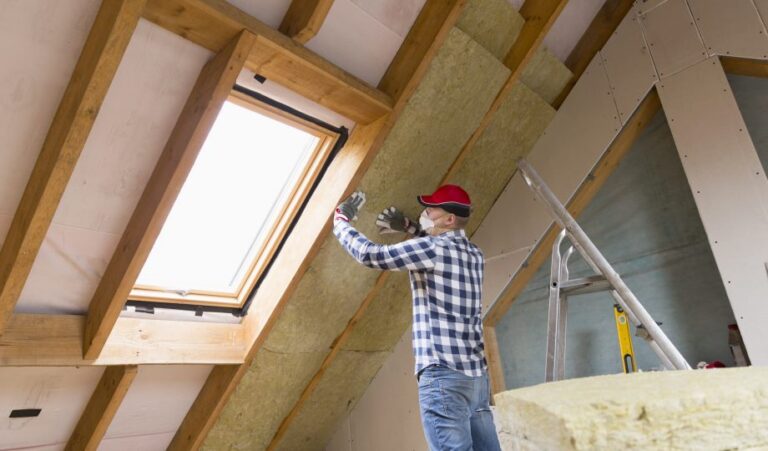Greater Manchester can seize the opportunity of green infrastructure

Introduction
Back at the start of winter, the University of Salford’s spacious Maxwell Upper Hall was filling up with industry professionals from across Greater Manchester’s built environment. They were all there to learn about the IGNITION Project and work together to break down the barriers preventing the creation of a nature–rich, climate resilient city region. IGNITION is a project in line with one of UKGBC’s own ambitions for the built environment, which sees the use of nature-based solutions as a mechanism to create climate resilience and environmental net gains.
For IGNITION to achieve its ambition of a 10% increase in Green Infrastructure (GI) by 2038 it’s necessary to establish the organisations who can physically deliver this. The afternoon featured six of Greater Manchester’s GI providers; Polypipe, Scotscape, Biora Group, GreenBlue Urban, Wonderwall and SEL Environmental, each gave presentations on how they’ve built business models for GI.
A central point of the day was the collaboration and discussion between multidisciplinary groups on three topics crucial to progress this agenda; the evidence base for GI, the challenges to GI creation and the opportunities to increase GI.
Evidence base for green infrastructure
Stimulating an increase in GI across an entire city region, as the IGNITION project aims to, will require the creation and dissemination of a supporting evidence base.
From our group discussions it became obvious that more data than we have available is needed to support an evidence base. It was also clear that a lot of organisations have this supporting data but have not shared it with industry, nor is there an intention to do so. We can rapidly accelerate our transition to nature rich urban landscapes through information sharing. However, this is a deep-rooted challenge, as this data often forms an integral, commercially sensitive, part of a business’s operation.
Attendees felt there was already sufficient data on:
- The value of health and wellbeing
- Air quality
- Rainfall and surface water infiltration
- Flood risks
- Costings for installation, maintenance and management of GI
- Value of trees in terms of ecosystem services – City of Trees are mapping this
- Capability of habitats to deliver ecosystem services – the Eco-metric being developed by the University of Oxford and Natural England
A key driver missing from the known data is the financial payback from GI. For instance, what are the financial benefits from the uplift to mental health and wellbeing? Is the benefit passed onto our health services and therefore the taxpayer? This lack of information can result in low levels of investor confidence in GI.
The attendees sought further data on the co-benefits of GI. For instance, how much carbon will be absorbed per square meter of green roof? With this knowledge it would theoretically be possible to develop a financial mechanism for GI through carbon offsets. This is an area that is already seeing massive growth as an increasing number of organisations make net zero commitments, and aim to create more livable cities for people and nature. As part of IGNITION, the University of Salford’s ‘Living Lab’ aims to uncover supporting data by measuring the impact of GI on temperature, humidity, energy use, carbon and noise absorption.
The attendees also found little evidence available on how GI will benefit communities and the relationships they will form with it. Conversations revealed that GI was most successful in communities that were included in its creation. The community becomes self-invested in its success and so contribute to its maintenance.
To further support industry in the process of creating more GI, UKGBC recently launched ‘Making the Case for Green Infrastructure: Lessons from Best Practice’, in which we expose real project challenges and the steps taken to overcome them.
Challenges to green infrastructure creation
The IGNITION project’s focus is developing new financial mechanisms to deliver GI, and this is perhaps the most crucial challenge to the implementation of GI. A key concern in this equation is the relationship GI will have with insurance premiums. Some argue GI will drive these up due to diminished structural integrity of built assets, whereas others argue premiums will reduce due to the increased resilience of the structure to flooding and overheating. The point was made at the event that it’s rare a building’s structure cannot support GI as typically buildings are over specified. It may also be that the recommendations from the Task Force on Climate-Related Financial Disclosures, which sets out how companies should govern, measure and report the transition and physical risks to their business from climate change, results in increased insurance premiums for companies not prepared for the impacts of climate change.
Attendees felt new government policy and standards for GI would drive innovation and competition in industry, something which could catapult this agenda forward. Some good news is that Natural England is in the process of developing a new set of GI standards, which could be released as early as this summer. Although given the recent happenings in Parliament it seems more than likely this will be delayed.
A deeper issue may be the risk adverse culture inherent of the UK built environment. It’s an industry historically slow at adopting new practices and innovations. It was theorised by the attendees that the next generation of workers will bring new approaches to the industry, leading to companies placing more value on social and/or environmental contributions. With new generations coming into the workplace accompanied by superior technological knowledge and experience, we are likely to see major disruptions.
Opportunities to increase green infrastructure
For developers and asset owners the creation of more and better green space in our urban environments offers a multitude of opportunities that are just waiting to be seized. For example, projects should be seen as opportunities to create places and destinations that attract the public; new public realm, amenity space and tourist attractions. This could improve developer image and demand for their properties. The provision of greater access to green space encourages public use and has a knock–on impact in that it often leads to better maintenance by the asset owner.
An increased development of GI will simulate business growth, the economy and job creation. If Greater Manchester was to lead in this space it could become a hub of GI skills.
We are currently living in a technological revolution, we can already use artificial Intelligence to design biophilic structures, and augmented reality and virtual reality offer us new ways of visualising designs. Yet we’re not seeing this transfer into practice.
Industry has a huge opportunity to build the supporting evidence base, demand better government policies, disclose the risks of climate change and utilise technology and innovation to create more and better green space.
This blog originally appeared on ‘On the Platform’ here.
Find out more about UKGBC’s work on Climate Resilience here.
Find out more about UKGBC’s work on Nature and Biodiversity here.
Please contact Robert Winch if you would like to join UKGBC’s climate resilience or nature and biodiversity interest groups.
Related
Storms, climate change and how we make our cities resilient

Sustainable Construction for the Sustainable Development Goals

Fixing the Competency Gap: Moving Beyond Qualifications in Domestic Retrofit

UKGBC Members visit Coal House in Cardiff

